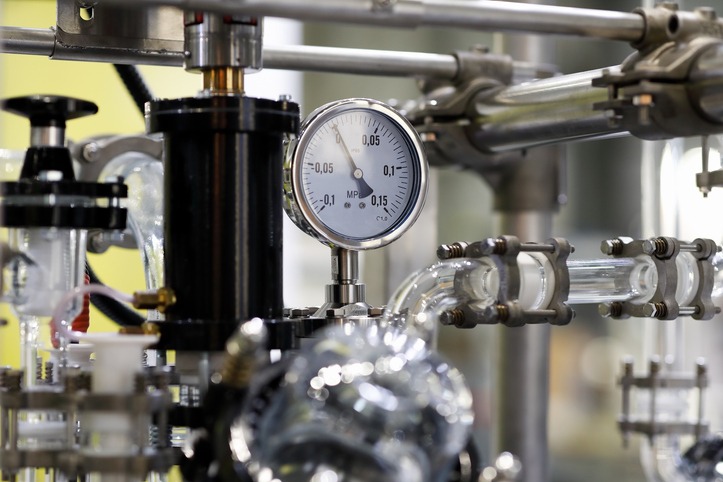Have you heard about vacuum gauges? These pressure-measuring instruments are designed to measure pressure in a vacuum, referring to vessels that operate at sub-atmospheric pressure.
Depending on the vacuum system type and the required operating level, different gauges are required, usually in combination, to determine vacuum levels accurately. There are multiple types of such instruments, each of them engineered to perform a specific function over a specific pressure range. The most popular variants include wide range, Pirani, and ionization models.
You will find a detailed explanation of each type below.
Wide range models
Wide range gauges are instruments that perform measurements by using multiple technologies to provide coverage from atmospheric to ultra-high vacuums. Such technologies refer to piezo sensors, Pirani gauges, hot cathodes, and cold cathodes. Wide-range models use two or three technologies, as one of them cannot cover the required range separately.
For instance, Pirani models are used for measuring low to medium-range vacuum, which makes this technology suitable to be paired with a piezo sensor or an ionization gauge, measuring ultra-high vacuum. There is a variety of wide range vacuum gauges that provide a superior user experience. The range of suchtechnologies is extensive, and each of them provides specific features that benefit wide-range instruments.
Pirani models
Pirani gauges have extensive use based on the thermal conductivity principle of operation. By making thermal conductivity measurements, users get information about pressure. These remarkable instruments use an electrical current for the purpose of heating a wire, which cools when gas molecules come in contact with the wire.
In the event of high pressure in the vacuum chamber, more molecules collide with the wire, leading to more heat loss and a cooler temperature of the wire. Low pressure, on the other hand, means a lower number of molecules is present in the atmosphere. Given the sensor is represented by an electrically heated wire, Pirani instruments are often named thermal vacuum sensors.
Moreover, gases have specific characteristics, meaning the response of these instruments will be different for every gas. It has to be calibrated to the gas that’s being measured. In the presence of contaminants, higher readings are likely to be measured.
The wire is a consistent part of a bridge circuit, which measures the resistance of wires. When pressure drops, the wire’s temperature will increase. The measured resistance change is then converted into a pressure reading. Check out this detailed definition of a bridge circuit.
Ionization models
When measuring low-pressure ranges, a special type of vacuum gauge should be used, which has an ionization design. The method of operation of these instruments involves the use of energized electrons to ionize residual gases, while the positive ions are afterward collected at the electrode. Then, the current is converted to a reading of pressure.
The incredible calibration sensitivity of these instruments to the gases they monitor makes them ideal for use in laboratory conditions. Their sensitivity is so high that a mass spectrometer has to be used to assess the composition of the gas near the gauge. Two types of ionization gauges are used, cold and hot cathode.
The cold cathode models have an operating range from 10-2 to 10-7 mbar. Despite the existence of various types of cold cathode vacuum gauges, all of them rely on crossed magnetic and electric fields for trapping electrons. The electron discharge process only requires minutes to reach lower temperatures, which is why cold cathode models are usually switched on at high pressures.
Once the magnetic field inside the instrument is activated, the path of electrons is constrained, and the possibility of residual gas ionization is relatively high. The following link, https://www.universetoday.com/76515/magnetic-field/, provides a better insight into a magnetic field. Afterward, the ions are measured and collected to calculate gas pressure.
In contrast, the operating ranges of hot cathode gauges are between 103 and 1010 mbar. They consist of a glass vessel with an interior heating element to which a gas of pressure that’s unknown is introduced. The hot filament discharges free electrons. This filament provides electrons at a controlled rate that’s constant. The electrons inside the bulk material roam free, meaning the material is capable of conducting electricity.
Gas pressure is obtained through a measurement of the electrical current flowing between the cathode and the anode in the glass bulb. Hot cathode models with high cathode temperatures are claimed to produce errors, which is why electrodes have to be treated properly prior to being used so as to minimize such risks. The best way to eliminate such issues is to use a cold cathode variant, which may be more effective when performing vacuum measurement.
To sum up
When purchasing a vacuum gauge, you should determine the desired pressure range, accuracy range, and the kind of power you need!
